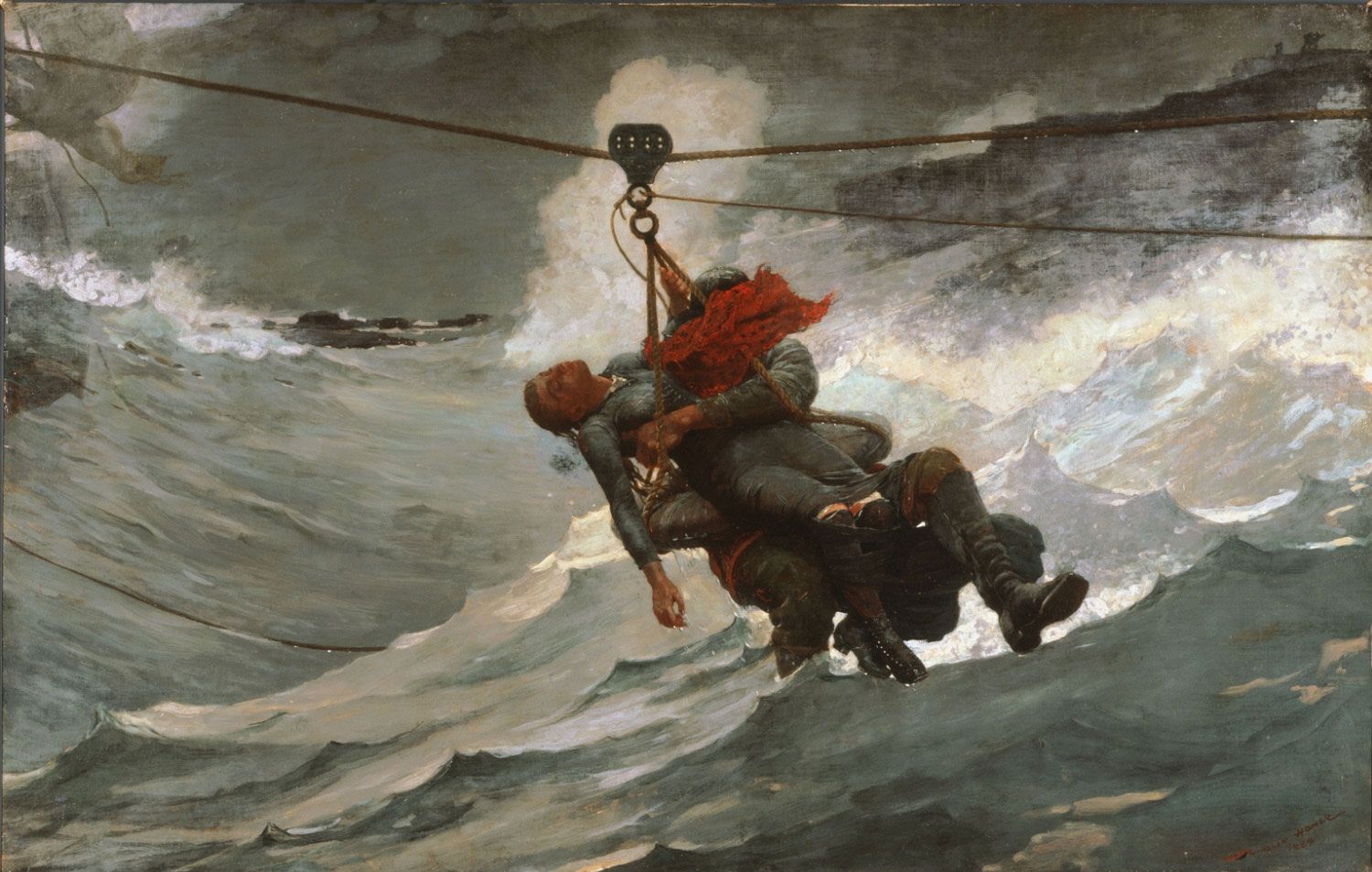
The Lifeline by Winslow Homer (1884)
Goals of the Curriculum
- Exposure to art is known to help address empathy erosion and burnout in healthcare professionals.
- Goals of this curriculum are three-fold: 1) to provide opportunities for self-reflection, 2) to provide opportunities for community building and 3) to promote overall well-being.
Curriculum Development
- Curriculum was developed by faculty member Dr. Emily S. Finkelstein (Division of Geriatrics and Palliative Medicine) with a background in art history (BA Art History, Princeton University, work experience at the Whitney Museum of American Art).
- Curriculum is based on programs described in the medical education literature and refined to maximize impact over short exposure.
- Feedback to date: Over 85% participants have rated the program as excellent (highest rating on a Likert scale) at: 1) promoting well-being, 2) providing opportunities for community building and 3) providing opportunities for self-reflection.
Logistics and Details
- CME credit is offered to participants.
- Small groups meet at the Metropolitan Museum for a 90-minute excursion.
- Within a small previously identified area, group is provided a brief background about the relevant history and context of the time and the art of a specific period.
- Examples are shown to demonstrate language and tools for looking at and communicating about art.
- Each participant receives a prompt and time to wander through the area finding a piece to bring back and share with the group. For example: "Find a work of art that makes you think of a patient you have recently cared for and tell us about why it reminds you of this person."
- Group takes a “tour” of everyone’s choices, giving each participant a chance to share and briefly talk about what they have chosen and why.
- This activity generates discussions about patients, professional challenges, and emotions such as grief and loss as well as inspiring stories and cases.
- Ratio of time spent (90 minutes) to value gained is high yield for participants.
60-minute zoom sessions are also now available.
If you are interested in learning more or scheduling a session for faculty members, fellows or other clinical staff either in person or via Zoom, please contact Jasmine Lucena and Dr. Emily Finkelstein. We look forward to hearing from you!

Testimonials (feedback from prior participants):
"[This program creates] an environment that promotes sharing of experiences and feelings in and about our personal time in medicine. What a wonderful program for all to enjoy."
"It is so nice to bring our humanistic side into the medical care we provide and to also experience this with our colleagues and see a different side of them. wonderful experience"
"It was a reminder of how art is a form of expression, when you think about the struggles the artists imprinted in their work."
"Wonderful opportunity to meet colleagues, reflect in a refreshing and stimulating setting, and use art as a medium for guided discussions to process many of the challenges, as well as sources of resilience, that we encounter in clinical practice. Wonderfully restorative and meaningful during a period of unique and sustained challenges at the hospital."
"Helped me become more professional, control emotions, and connect with my coworkers."
"Insights into how creative expression can both reveal and empower. Would very much welcome more programs like this!"

